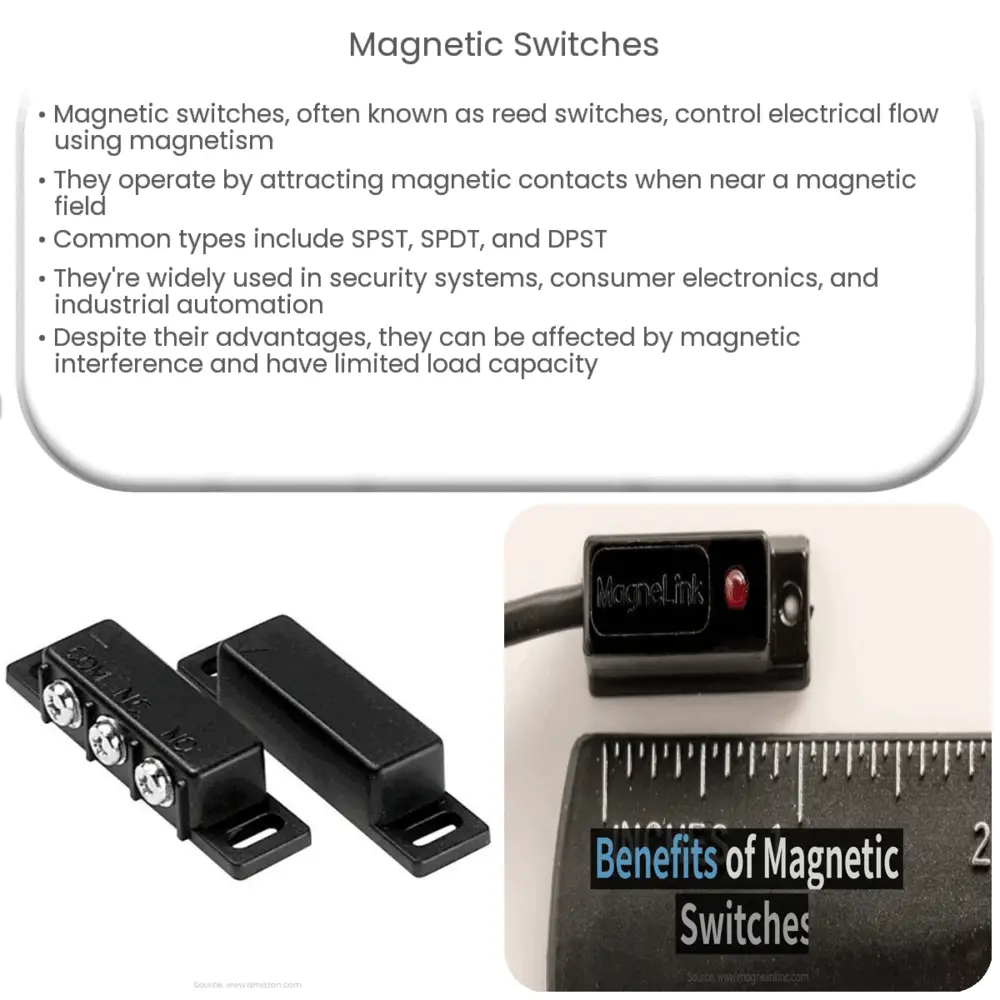Explore the world of magnetic switches, their operation, types, key applications, advantages, limitations, and their promising future.

Magnetic Switches: A Comprehensive Understanding
Magnetic switches, also commonly referred to as reed switches, are a fundamental element in various devices and applications due to their unique properties and operational mechanics. These are highly reliable and simple devices that utilize the power of magnetism to control the flow of electrical current.
Principle of Operation
At the heart of a magnetic switch lies the principle of magnetism. These switches are typically composed of two or more flexible magnetic contacts, often encased in a glass envelope. When a magnetic field is brought near the switch, the magnetic contacts attract each other, establishing a connection and allowing the electrical current to flow. Once the magnetic field is removed, the contacts separate, thereby breaking the circuit.
Types of Magnetic Switches
Magnetic switches come in various types, each with its unique features and applications. Here are some of the most commonly used types:
Key Applications
Magnetic switches find widespread use in various industries and applications, some of which are:
Despite their simplicity, magnetic switches play a vital role in many technological aspects of our lives, and their importance cannot be overstated.
Advantages and Limitations
Magnetic switches offer several advantages that contribute to their widespread adoption. They are:
However, it’s crucial to understand that magnetic switches also come with certain limitations:
Future of Magnetic Switches
The future of magnetic switches looks promising. Advancements in technology and materials science are likely to lead to switches with improved sensitivity, smaller sizes, and increased load capacities. Furthermore, the rising trend of automation and IoT devices will likely spur more innovative applications of these switches.
Conclusion
In conclusion, magnetic switches are an integral part of many devices and systems in our modern world. Their simple operation principle, reliability, and sensitivity make them a desirable choice for various applications, ranging from home security systems to industrial automation. Despite their limitations, ongoing advancements in technology are expected to mitigate these issues and expand the potential applications for magnetic switches. As we move towards a more automated future, the role of these humble devices is set to become even more significant.

